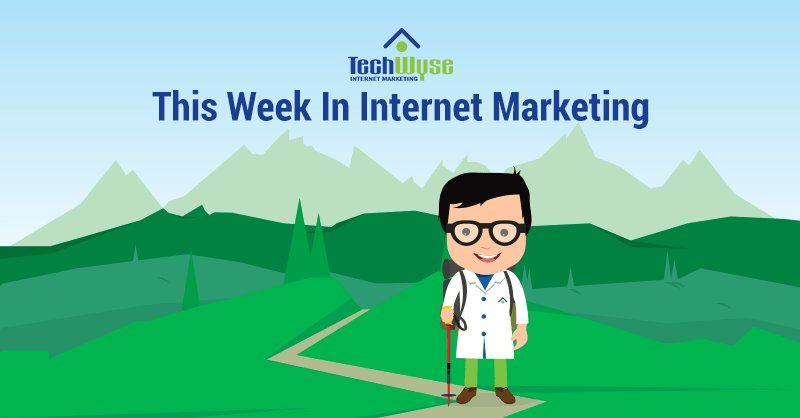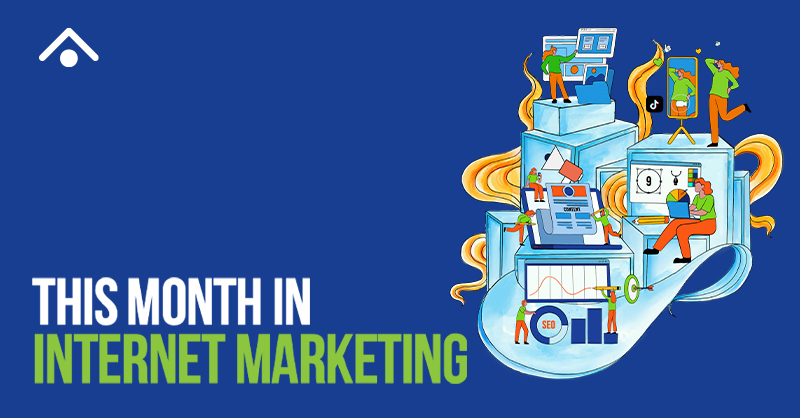Hello and Happy Tuesday!
This week we cover Google's compliance with the General Data Protection Regulation, Instagram's focus on feed recency, and tactics for local search visibility. We also cover design decisions impacting page performance and a tell-all guide for driving traffic to your WordPress blog.
Instagram's Adding New Ways to Uncover Recent Posts, in Variance to the Current Algorithm

Instagram users can celebrate a small win as the social media platform confirmed two changes to its feed, giving them a way to see the latest content as opposed to what the algorithm wants you too. The introduction of the “New Posts” button gives users control over when posts are loaded and refreshed. Tap on the button to be taken to new posts at the top of the feed or don’t tap to stay where you are. The second confirmed change is that newer posts will more likely appear at the top, a slight concession to the current algorithm. What these two changes mean for brands is that they will more strategic about the timing of content.
To Comply with GDPR, Google asks Publishers to Manage User-Data Consent for Ad Targeting in EU

The most significant change to data protection is going into effect in Europe on May 25th. The GDPR, General Data Protection Regulation, will require companies operating in Europe to gain opt-in consent for collection and use of personal data. Failure to comply can result in severe financial penalties. In a letter sent out last week, Google is asking their partners to manage the consent process on their behalf. In order to comply with the new rules, Google will manage the consent for their own properties such as Google.com and YouTube, but publishers and advertisers that use Google’s ad offerings will have to get consent from their own users.
Local SEO in 2018: 12 Tips to Build Local Engagement

Dana DiTomaso, President and Partner at Kick Point recently spoke about local SEO in 2018 during PeepCon 3.0. She explained how engagement will become a more significant factor for local SEO in the future and why businesses “need to focus more on optimizing for local search" and how they can get better online visibility through local engagement tactics. A few tips include checking your Google My Business Timeline, engaging people who talk about what your business does, using a review management system, and creating a trackable custom link for directions.
How To Drive More Traffic To Your WordPress Blog

With over 440 million blogs in the world, earning your share of traffic is no easy feat—it requires strategy and time. Lucy Barret of Search Engine Watch breaks down what you need to do to build your blog readership and be successful. 1) Make it fast—if your blog doesn’t load within 3 seconds, you’ve lost already. 2) Blog regularly—consistent delivery of content engages followers when they come back looking for new posts. 3) Incorporate internal linking—keep your visitors browsing your blog longer. These are just three of the many tactics she lists out in her guide.
4 Tips to Improve your Page’s Performance

Web performance analyst Henri Helvetica offers his advice on boosting your site’s performance. Performance is finally becoming a bigger part of the conversation in web design and development. However, it can still be a challenge to get people to actually consume the content. The easiest issue that can be fixed is your page weight—images are one of the biggest culprits for slow loading pages. Take account of your page weight. Take account of your page weight and make sure your assets are small and optimized for the viewport. For example, you shouldn’t be able to see any desktop-size assets on a mobile device.
Check out these additional articles for more internet marketing news!
After a Week of Turmoil, What Comes Next for The Social Network?






on
Great tips, very helpful. Thanks for sharing.